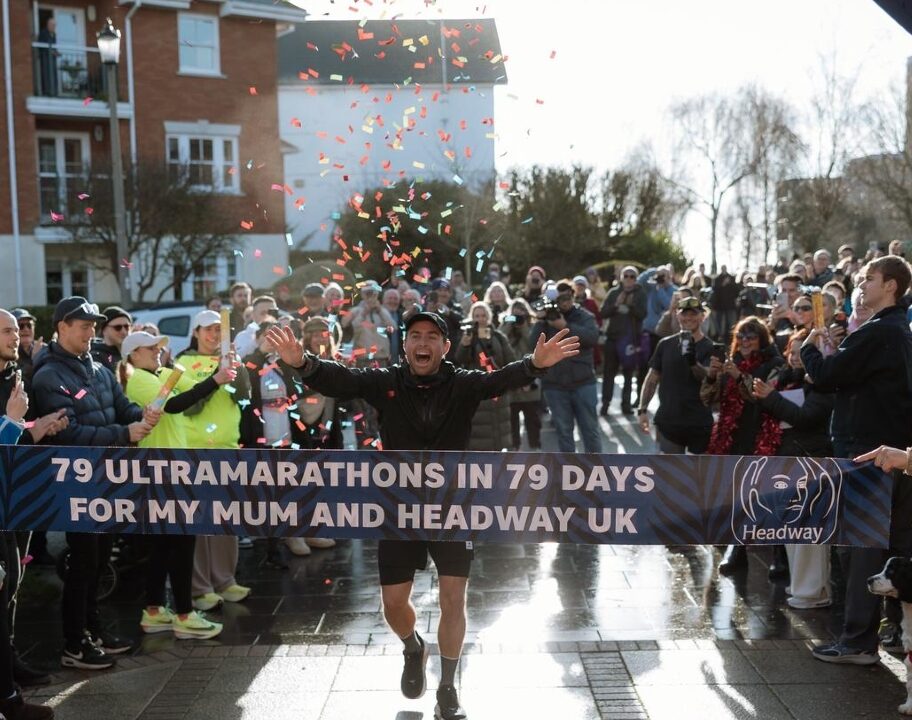Compression sportswear is something we often think of as being a recovery garment. But there are plenty of benefits to using compression gear during your training sessions, and even on race day.
From improving time to fatigue and efficiency, to reducing energy waste. For endurance athletes, strategic use of compression sportswear could help you to go faster, further – or both. Find out more about the benefits of wearing compression during exercise.
Fend off fatigue with improved blood flow and muscle oxygenation
A major benefit of compression sportswear is the ability to enhance blood flow, using graduated pressure to speed up venous return.
During endurance exercise, energy is created within the muscles via a chemical reaction between oxygen and glucose. As exercise intensity increases, the body can’t get enough oxygen to the muscles quickly enough for this aerobic energy reaction to happen. This is when the anaerobic system kicks in. The anaerobic system is capable of producing energy much quicker. But without adequate oxygen, the body cannot clear the hydrogen ions created as a by-product of the energy-producing chemical reaction. This creates a build up of acidity in the muscle cells – the cause of that burning sensation you feel when you start to experience fatigue.

To buffer this acidity, the body produces lactate. Lactate binds with the hydrogen ions and is then removed from the muscles via blood flow. This enables us to work at a higher intensity level for longer. But eventually the body reaches a stage where it can’t clear lactate quickly enough and so the muscle function deteriorates. That’s the point where you have to slow down, or stop altogether.
Getting oxygen to the muscles, and clearing lactate is all handled by blood flow. Compression applies pressure at the extremities to get blood back to the heart and out through the circulatory system quicker. This means your body can deliver oxygen to the muscles much more efficiently – enabling you to work at a higher intensity rate before your body has to switch to the anaerobic system. And, when the anaerobic system does kick in, improved blood flow means your body can clear lactate faster.
In simple terms, improved blood flow equips your muscles with the tools it needs to be able to go further, at a faster pace before fatigue sets in and you have to slow down.
Compression sportswear can help to reduce energy waste and muscle damage
Alongside improving blood flow, compression sportswear also acts as a support system for your muscles. The tight, compressive fit stabilizes the muscles, reducing oscillation (unwanted movement) during exercise. In endurance sport you want the body to be working as efficiently as possible, and this muscle stabilisation helps to reduce energy waste.
“When it comes to strenuous activity like trail running with lots of uneven terrain and downhill sections, SKINS Compression garments can help improve energy waste. This is accomplished by wrapping and protecting your muscles to stabilise them, ensuring less damage from muscle oscillation. This in turn causes less wasted energy improving your running economy and helping you run faster for longer on all those tricky ground conditions you are faced with.”
A study published in Sports Medicine New Zealand examined the benefits of compression clothing for runners. The research showed that markers of muscle damage and inflammation were reduced when compression was used. It concluded that runners wearing compression sportswear can benefit from improvements related to endurance performance, including improved running economy and reduced muscle pain.
For long distance events, this improved energy efficiency can aid your performance and reduce muscle damage so you can recover faster afterwards.
Maintain better form through improved proprioception
We all know that once fatigue starts to set in, it becomes harder to maintain form – especially during long distance running. Our hips tend to drop, our shoulders begin to hunch. And all of that reduces efficiency. By promoting blood flow and providing muscular support, compression sportswear benefits us by inhibiting the onset of fatigue. Helping us to maintain strong form, for longer..

Compression gear provides the muscles with support, which can help to promote better proprioception. Essentially, your bodily awareness. Having better proprioception is key, particularly in long distance trail events where navigating uneven terrain becomes increasingly difficult as the time on your feet racks up. Frontiers in Physiology published a study which investigated the effect of compression running pants on knee proprioception in half-marathon runners. The study found a positive effect on knee proprioception and concluded that compression tights could help to reduce the probability of knee injury during running.
Wearing compression kit could help you to improve your running form and reduce your likelihood of picking up an injury due to poor technique.
Reduced perceived effort: the psychological advantage of compression sportswear
We’ve talked a lot about the physiological benefits of compression sportswear. But a huge part of endurance sport is the mentality. Being able to trust in your training. Having the ability to endure adversity and push on when the going gets tough. Knowing that you’re wearing kit designed to help you to perform at your best can give you a huge mental boost.
A study in the European Journal of Applied Physiology notes that runners in the study wearing compression garments during submaximal running in 32°C temperatures reported a lower rate of perceived exertion than those running without the aid of compression. Having a lower perception of effort gives you the mental tools to be able to sustain a higher performance, for longer. In races and events such as ultramarathons and multi-day trail races, where mental toughness is as crucial as physical endurance, one shouldn’t underestimate the value of a mental boost.
Compression sportswear alone isn’t going to be a magic bullet for your performance. But the benefits it can hold set you up to get the most out of your training sessions and to make the work count come race day.



![Hannah Rickman Montane Winter Spine Race 2025 [Photo credit: The Spine Race]](https://run247.com/wp-content/uploads/2025/01/Hannah-Rickman-Montane-Winter-Spine-Race-2025-912x720.jpg)




